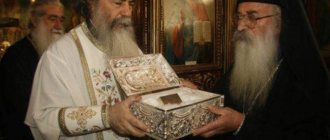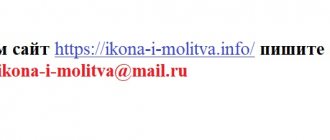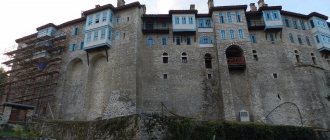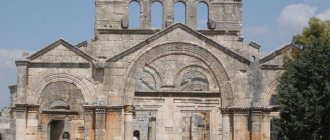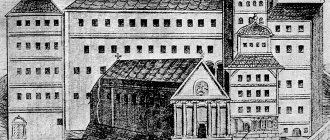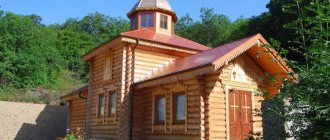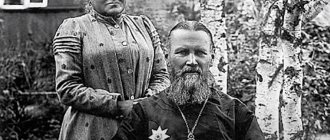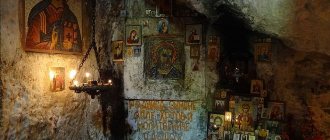Mir
Russia Sverdlovsk Region Verkhoturye St. Nicholas Verkhoturye Monastery Map is loading…
{"format":"leaflet","minzoom":false,"maxzoom":false,"limit":50,"offset":0,"link":"all","sort":[""], "order":[],"headers":"show","mainlabel":"","intro":"","outro":"","searchlabel":"\u2026 \u0441\u043b\u0435\ u0434\u0443\u044e\u0449\u0438\u0435 \u0440\u0435\u0437\u0443\u043b\u044c\u0442\u0430\u0442\u044b","default":"","import-annotation":false,"width ":"auto","height":"350px","centre":{"text":"","title":"""link":"""lat":58.86234300000000274621925200335681438446044921875,"lon": 60.8085439999999977089828462339937686920166015625,"icon":""},"title":"","label":"","icon":"","lines":[],"polygons":[],"circles":[ ],"rectangles":[],"copycoords":false,"static":false,"zoom":8,"defzoom":14,"layers":["OpenStreetMap"],"image layers":[] ,"overlays":[],"resizable":false,"fullscreen":true,"scrollwheelzoom":true,"cluster":false,"clustermaxzoom":9,"clusterzoomonclick":true,"clustermaxradius":80, "clusterspiderfy":true,"geojson":"","clicktarget":"","showtitle":true,"hidenamespace":false,"template":"","userparam":"","activeicon": "","pagelabel":false,"ajaxcoordproperty":"","ajaxquery":"","locations":[{"text":"\u003Cb\u003E\u003Ca href=\"/palomnik/%D0% A1%D0%B2%D1%8F%D1%82%D0%BE-%D0%9D%D0%B8%D0%BA%D0%BE%D0%BB%D0%B0%D0%B5%D0%B2 %D1%81%D0%BA%D0%B8%D0%B9_%D0%92%D0%B5%D1%80%D1%85%D0%BE%D1%82%D1%83%D1%80%D1 %81%D0%BA%D0%B8%D0%B9_%D0%BC%D1%83%D0%B6%D1%81%D0%BA%D0%BE%D0%B9_%D0%BC%D0%BE %D0%BD%D0%B0%D1%81%D1%82%D1%8B%D1%80%D1%8C\" title=\"\u0421\u0432\u044f\u0442\u043e-\u041d\u0438\ u043a\u043e\u043b\u0430\u0435\u0432\u0441\u043a\u0438\u0439 \u0412\u0435\u0440\u0445\u043e\u0442\u0443\u0440\u0441\u043a\u04 38\u0439\u043c\u0443\u0436\ u0441\u043a\u043e\u0439 \u043c\u043e\u043d\u0430\u0441\u0442\u044b\u0440\u044c\»\u003E\u0421\u0432\u044f\u0442\u043e-\u041d\ u0438\u043a\u043e\u043b \u0430\u0435\u0432\u0441\u043a\u0438\u0439 \u0412\u0435\u0440\u0445\u043e\u0442\u0443\u0440\u0441\u043a\u0438\u0439 \u043c\ u0443\u0436\u0441\u043a\u043e \u0439 \u043c\u043e\u043d\u0430\u0441\u0442\u044b\u0440\u044c\u003C/a\u003E\u003C/b\u003E","title":"\u0421\u0432\u044f\u0442\u04 3e- \u041d\u0438\u043a\u043e\u043b\u0430\u0435\u0432\u0441\u043a\u0438\u0439 \u0412\u0435\u0440\u0445\u043e\u0442\u0443\u0440\u 0441\u043a\u0438\u0439\u043c \u0443\u0436\u0441\u043a\u043e\u0439 \u043c\u043e\u043d\u0430\u0441\u0442\u044b\u0440\u044c","link":"","lat":58.862343000000002746 21925200335681438446044921875,"lon":60.8085439999999977089828462339937686920166015625 ,"icon":""}],,"imageLayers":[]}
58.863082; 60.812262
Russia, Sverdlovsk region, Verkhoturye, Voinskaya street
Verkhoturye, Sverdlovsk region
Russia
Telephone.:
8(34389)224-44 (office), 8(34389)225-98 and (pilgrimage hotel), 8(953)387-86-24 (Orthodox museum).
Email:
St. Nicholas Monastery
- a monastery of the Russian Orthodox Church in the city of Verkhoturye, Sverdlovsk region.
History[edit]
- Founded in 1604 by Hieromonk Jonah from Poshekhonye, who was previously a priest.
- On September 12, 1704, with the permission of Metropolitan Philotheus (Leshchinsky), the relics of St. Simeon from Merkushino were transferred to the Nikolaevsky Monastery. In the chapel of the St. Nicholas Church, the incorruptible relics of the righteous Simeon of Verkhoturye rest in a silver shrine, built in 1864.
- In 1716, the entire monastery, with all the churches, was destroyed by fire, but the relics of the righteous Simeon remained unharmed. Before the 1917 revolution, the monastery operated a two-class school and an almshouse.
Cathedral of the Exaltation of the Cross in Verkhoturye
The St. Nicholas Monastery contains the relics of Simeon of Verkhoturye, which attracted pilgrims to it both in the past and at the present time. The territory of the monastery is huge, much larger than the Moscow Kremlin. The monastery stands on a hill between the Kalachik and Sviyaga streams, one of which also separates it from the Kremlin.
- In 1924, the monastery was closed, its premises were used as a colony for minors. Under Soviet rule, the monastery housed a colony of juvenile delinquents;
- In 1990, the monastery was returned to the Russian Orthodox Church, the St. Nicholas Monastery was reopened, and restoration of its buildings began.
The main church of the monastery - St. Nicholas - did not survive these times, but three more have been preserved in the monastery (all active), as well as the monastery fence with towers (second half of the 19th century). Women are allowed to enter the monastery (inside the fence) only in a skirt and headscarf.
Museum
The Orthodox Museum began its work on the territory of the Verkhoturye St. Nicholas Monastery in the nineties. Its founder was Abbot Tikhon, who was actively interested in and collected data about the history of the Orthodox Church in the Urals. Now the museum’s collection contains ancient documents, books, photographs, icons, household items, etc.
Gospel of the 17th–18th centuries, © ulvrid_tourist
Donations are required upon entry. From here you can book a tour of the entire monastery and visit the temples of the complex, as well as in the villages of Merkushino and Krasnaya Gora. Particularly popular is the trip to the Aktai monastery, where a spring with healing waters comes to the surface.
Monastery buildings[edit]
Holy Cross Cathedral[edit]
Gate Church of Simeon and Anna
The eclectic Cathedral of the Exaltation of the Cross (1905-1913, architect A. B. Turchevich) is the third largest church in Russia, second only to the Cathedral of Christ the Savior in Moscow and St. Isaac's Cathedral in St. Petersburg. Nicholas II was expected at its opening in 1913 in honor of the celebration of the tercentenary of the House of Romanov, who, however, could not come. Inside the cathedral there are as many as three unique faience iconostases, which were destroyed under Soviet rule and restored in 1998 for the 400th anniversary of the city of Verkhoturye. The cathedral contains the relics of St. Simeon of Verkhoturye. Built in Russian-Byzantine style. The main church in honor of the Exaltation of the Holy Cross, consecrated on September 11, 1913. The left side chapel is in the name of rights. Simeon of Verkhoturye, consecrated on May 27, 1914. The right chapel in honor of the Dormition of the Blessed Virgin Mary, consecrated on September 10, 1916.
Church of the Transfiguration in Verkhoturye
Transfiguration and Simeon-Anninskaya gate churches[edit]
On the territory of the Nikolaevsky Monastery there are also the Transfiguration Church (1821) in the classicist style with a bell tower, destroyed in the 1930s and restored in 1998, and the Simeon-Anninskaya Gate Church (1856) in the traditions of ancient Russian architecture. Other monastery buildings have also been preserved, including the fraternal building and the abbot's building, which houses the Orthodox museum.
House for receiving honored guests[edit]
Outside the walls, on the shore of the Kalachik pond, there is a wooden house built in 1913 for the expected arrival of Emperor Nicholas II for receiving honored guests (presumably by the architect V.A. Pokrovsky), reminiscent of an ancient Russian tower.
House for receiving honored guests
- Until 2008, it housed the exposition of the Verkhoturye Historical and Architectural Museum-Reserve. The building stood under a security and fire alarm system awaiting repair and restoration work.
- The house was heavily damaged in a fire that occurred on the evening of November 11, 2010. It is expected that its restoration will be completed in time for the celebration of the 400th anniversary of the House of Romanov in 2013.[2] (according to other sources - by 2014).
Shrines and patronal feasts
The monastery contains two icons, which contain particles of the relics of two saints - the patron saint of the monastery, Nicholas the Wonderworker, and the famous Archimandrite Hippolytus, who ruled the monastery for a long time.
In addition, reliquaries are also kept in churches, which contain particles of the relics of many saints. Among them:
- Reliquary 1: Martyr Athanasius, Seraphim of Sarov, St. Sergius of Radonezh, saints of the Kiev Pechersk Lavra, etc.;
- Reliquary 2: Basil the Great, Anthony the Great, Ignatius the God-Bearer, Optina elders, Glinsky, Vladimir and Ryazan saints.
In addition to the reliquaries, a cross with the relics of the apostles of Christ: Matthew, Andrew and Stephen is kept here. And in 2006, a particle of the relics of St. Hippolytus, who was an archimandrite in the monastery, was transferred to the monastery. There is also a monument in the courtyard, which was erected in honor of the deceased saint.
Temple icons with particles of the relics of St. Nicholas and John of Rila
There is only one patronal holiday, not counting the traditional Christian celebrations of Easter and Christmas, and it is associated with the saint in whose honor the monastery was named. The monastery celebrates the day of memory of St. Nicholas the Wonderworker - this is December 19 according to the new style and the day of the transfer of part of his relics is May 22 according to the new style. In addition, the days of memory of Archimandrite Hippolytus are celebrated - December 17 (death day) and January 30 (angel day).
How to get there[edit]
Directions:
It is convenient to get from Moscow to Verkhoturye by train (No. 84M Moscow - Serov, No. 84E Moscow - Priobye). Travel time is just under one and a half days. For road travelers, you can get to Verkhoturye from Yekaterinburg along the P-352 road. The distance is more than two hundred kilometers. Turn off the highway to Verkhoturye (to the right) - about forty kilometers after Nizhnyaya Tura. The best way to get to Yekaterinburg from the capital is through Nizhny Novgorod, Kazan, and Izhevsk. Upon arrival in Verkhoturye, you can stay at the monastery hotel or at a hotel located in the city center. Attention! On the way to Verkhoturye, do not forget to set your watches forward two hours.
Address:
624380, Sverdlovsk region, Verkhoturye, st. Voinskaya, 1A.
Tel.:
8(34389)224-44 (office), 8(34389)225-98 and (pilgrimage hotel), 8(953)387-86-24 (Orthodox museum).
Email:
Official site.
Story
The formation of the monastery occurred during the reign of Boris Godunov. In 1604, the monk Jonah approached him with a request to build a new temple complex in Verkhoturye, which had to be dedicated to St. Nicholas the Wonderworker, and the chapels would benefit the saints. Princes Boris and Gleb.
The king did not think for long, so the monk soon went with the royal letter to the Verkhoturye governor Pleshcheev and head Khlopov. Here, not only were the issues regarding the construction of the temple resolved, but also everything necessary for this was allocated to Jonah. Thus, the temple overnight received:
- a complete set of icons and church utensils;
- Gospel, psalter, book of hours, missal and other liturgical books;
- 2 bells weighing 2 pounds 22 hryvnias;
- censer, chalice, wax in the amount of 22 hryvnias and incense in the amount of one and a half hryvnias;
- half a bucket of church wine.
At the same time, an official salary was assigned to the temple servants, consisting of 3 rubles for the sexton and 6 rubles, respectively, for Jonah himself.
4 years passed until Vasily Shuisky, according to the tsar’s charter, allowed the necessary amount of timber to be issued for the construction of the temple.
The year 1620 brought changes. At that time, the formation of the Siberian diocese took place, the episcopal see of which was settled in Tobolsk. The first Siberian Archbishop, Kiprian Starorusennikov, visited the monastery in Verkhoturye the following year, and installed here a new abbot, Herman, from the Joseph Monastery, located in the city of Volokolamsk. Jonah was no longer here at that time. The changes affected Hegumen Gerasim, who, after carrying out work on the arrangement and formation of the monastery by Jonah, accepted the appointment in 1615. The monastery was looked after by both the royal family and the highest ranks of the clergy. Thus, without turning points or problems, under the tutelage and protection of their superiors, the monastery servants entered the new century. Few people knew about him, but this did not bring trouble, and harassment was avoided.
Changes came in 1704, when it became known that the relics of St. Simeon were transferred to the monastery on September 12. They were installed in the wooden church of the monastery, dedicated to the Intercession of the Blessed Virgin Mary. Since then, an annual service has been held on this day, in memory of this event.
Time passed, and on the territory of the Nikolaev Monastery its own unique complex of buildings was formed. Over time, the old church, which sheltered the relics of St. Simeon, collapsed, but new churches were built. The regular St. Nicholas Monastery changed its status to cenobitic and received the opportunity to welcome a larger number of brothers in 1894, immediately on January 1. In connection with this change, the internal complex of outbuildings began to change and grow. Three Valaam monks Arefa, Elijah and Job helped in the correct formation of monastic life.
The advent of Soviet power changed the life of the clergy throughout the country. This misfortune did not spare the Verkhoturye Monastery either. Its last archimandrite Xenophon, known in the world as Konstantin Petrovich Medvedev, was arrested in 1920 and sent to correctional labor in Yekaterinburg. The reason was given as cooperation with Kolchak’s White Army. Five years later, he was accused of distributing anti-Soviet literature, and was imprisoned for two years, followed by a ban on living in the Ural region, since he was now considered a socially dangerous element. So, accusing the archimandrite of one crime or another, the Soviet government sent him to the camps, forcing him to build the White Sea Canal. He was rehabilitated posthumously in 1989.
The monastery in Verkhoturye was closed after the second arrest of the archimandrite. The monks escaped his fate. They created a small monastery on the Aktai zaimka. It was not possible to stay there for long. The monastery was dispersed in 1928. The relics were removed from the monastery almost immediately, and since 1929 they have been exhibited in the museum for work on anti-religious education. Later they were hidden in storage rooms, and in 1989 they were returned to the Church. The relics reappeared on the territory of the monastery when they were solemnly transferred to the restored and consecrated Transfiguration Church on September 25, 1992.
During the USSR, the monastery itself was a colony for juvenile delinquents. Only in 1990 was he returned to spiritual life.
So far restored:
- gate church;
- corps of abbots;
- Transfiguration Church;
- a shop selling icons and liturgical books;
- hotel for pilgrims;
- fraternal corps;
- Holy Cross Cathedral;
- The burials of the monks were brought into perfect condition.
In 1994, pilgrims began to appear again. Since 1996, a Sunday school was opened in the Nikolaevsky Monastery, which stimulated the restoration of the children's dormitory of the parochial school. There is also a museum of Orthodoxy on the territory of the monastery.
Schedule of services
Services in the monastery churches are conducted in turn by all clergy:
- The first morning service begins at 6 am.
- The afternoon service begins at one o'clock in the afternoon.
- The evening service begins at 5 pm.
- How to get to the Church of St. Nicholas Verkhoturye Monastery
There are special regular buses going to the Verkhoturye monastery. The city also has excursion flights that take visitors right to the doorstep of the monastery, despite the fact that the town is small and the temple domes are visible from almost everywhere.
Contact details
- Address: Voinskaya street 1
- Phone: 2-26-04, 2-23-45
Photos
Even though there were years of hardship and oblivion, this only strengthens the spirit of Christians. The restoration of the monastery, subjected to so much persecution, speaks of this to everyone.
